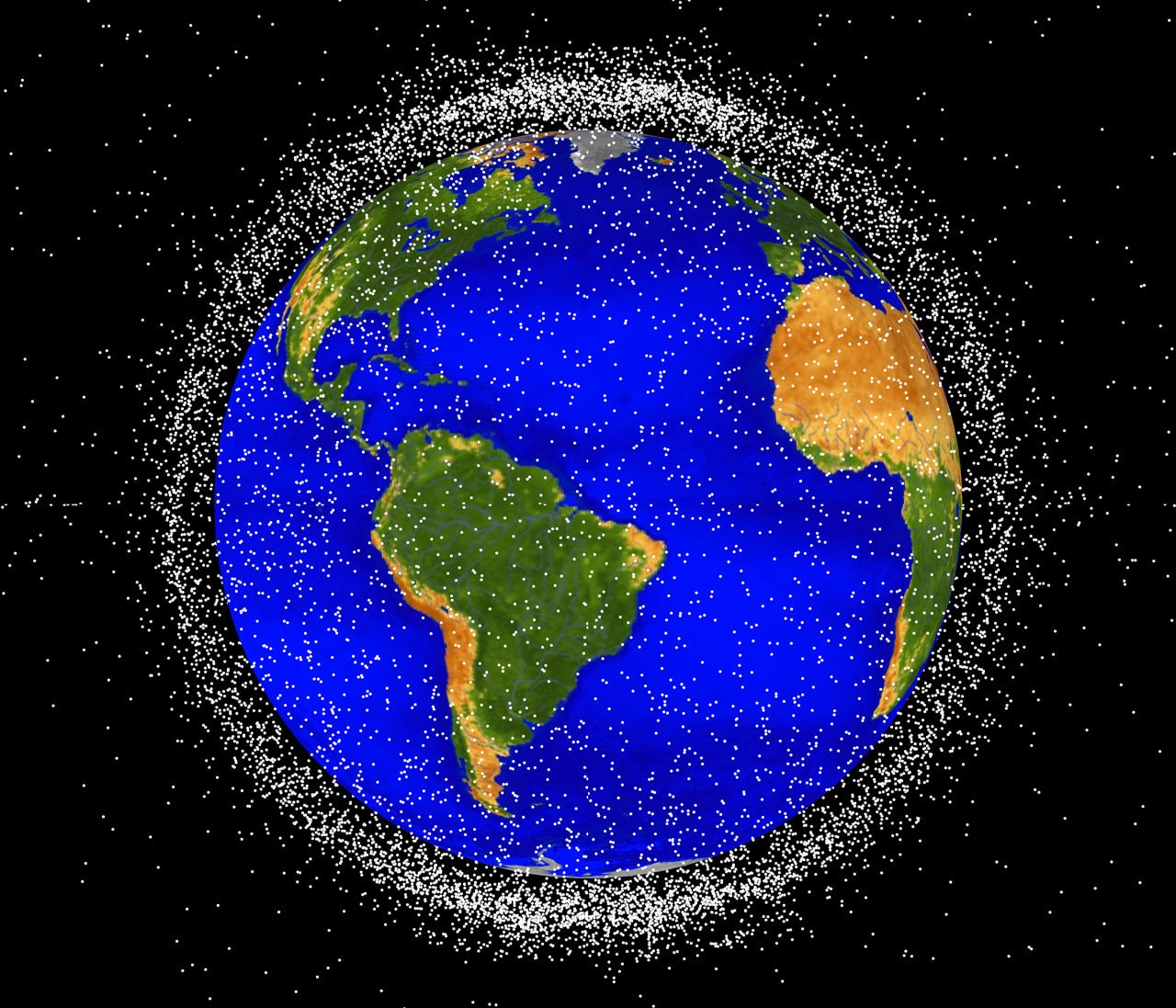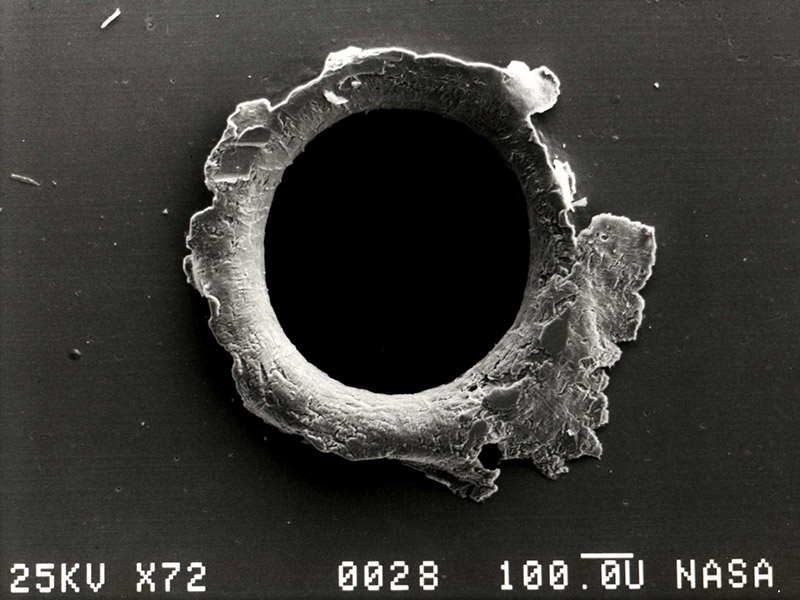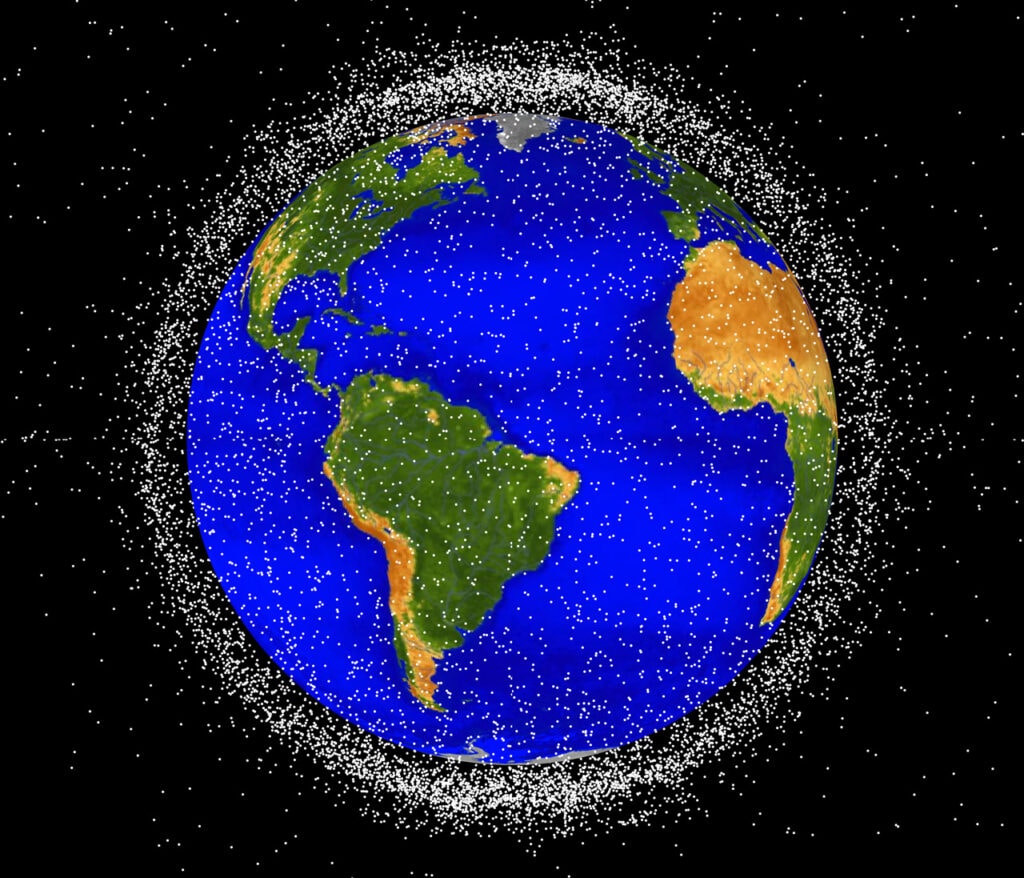
Tracking undetectable space junk
Colliding pieces of space debris emit electric signals that could help track small debris littering Earth’s orbit, potentially saving satellites and spacecraft.

Colliding pieces of space debris emit electric signals that could help track small debris littering Earth’s orbit, potentially saving satellites and spacecraft.
Experts

Professor of Climate and Space Sciences and Engineering
Professor of Aerospace Engineering
Satellite and spacecraft operators may finally be able to detect small pieces of debris orbiting Earth using an approach proposed by researchers from the University of Michigan.
“Right now, we detect space debris by looking for objects that reflect light or radar signals,” said Nilton Renno, the principal investigator from the University of Michigan team and a professor of climate and space sciences and engineering and aerospace engineering. “The smaller the objects get, the harder it becomes to get sunlight or radar signals strong enough to detect them from the ground.”
Today, objects larger than a softball are the only trackable pieces of this “space junk,” which is less than 1% of the nearly 170 million pieces of trash leftover from rocket launches, spacewalks and defunct satellites. The new method can detect debris smaller than one millimeter in diameter—similar to the thickness of pencil lead.
Renno will present the findings at the Second International Orbital Debris Conference Dec. 5 with Yun Zhang, a postdoctoral researcher in climate and space sciences and engineering. The results are among the first to come from a larger, collaborative project funded by the Intelligence Advanced Research Projects Activity’s Space Debris Identification and Tracking Program. The project is led by military contractor Blue Halo and includes the University of Alaska Fairbanks.

Trash in space is more than unsightly—it’s hazardous. At a typical orbital speed of 22,000 miles per hour, a plum-sized piece of space debris can hit another object with the same energy as a car crash on the highway, potentially putting a satellite out of commission. Even smaller pieces can damage spacecraft, so tracking them is mission critical for satellites and spacecraft that need to take evasive actions.
Earth’s orbit is growing increasingly cluttered, which makes protecting satellites much harder. Pieces of space debris often collide with each other, fragmenting larger pieces into small, undetectable pieces as a result. Some experts fear that the amount of space debris could exponentially grow as individual pieces continue to collide, eventually wreaking havoc upon the infrastructure that we rely on for GPS, cell phone data, weather monitoring and more.

While potentially disastrous, collisions between space debris could prove to be the best way to track tiny space junk. When small pieces of space debris collide, they blow up into tiny fragments, some of which vaporize into a charged gas due to the heat generated by the impact.
“When the cloud of charged gas and debris fragments expands, it creates lightning-like energy bursts, similar to signals produced by static sparks that appear after rubbing a freshly laundered blanket,” said Mojtaba Akhavan-Tafti, an assistant research scientist in climate and space sciences and engineering, and a lead scientist on the project.
After this initial energy burst, charged solid pieces of debris fragments can create electric field pulses whenever they are close enough to each other, producing additional lightning-like bursts. These electric signals last for only a fraction of a second, but they could help track pieces of space debris and clouds of microscopic fragments that form when debris collides.
When two pieces of aluminum collide at typical orbital speeds, they emit an electrical burst strong enough for a 26-meter dish with a high-quality radio receiver to detect from the ground, according to the team’s most recent computer simulations. The electric field pulses should similarly be detectable with more sensitive radio arrays, such as NASA’s Deep Space Network.

There’s still a lot to work out. The frequency of the electrical signals can vary with the speed of the collision and what the debris is made of, which could complicate detection. To see the electric signals, they need to be stronger than the ground instrument’s background signals and pass through Earth’s upper atmosphere.
The team plans to refine their approach with additional computer simulations, by measuring real signals with NASA’s Deep Space Network, and by analyzing data from hypervelocity experiments at the Naval Research Laboratory and NASA’s Ames Research Center. Using the facilities’ lasers, the team can launch different kinds of debris at targets over a range of orbital speeds and measure the characteristics of the electric emissions resulting from the impact. If such experiments reveal a way to detect a wide range of electrical signals generated during space debris collisions, they could determine not just where space debris is, but what it looks like and is made of.
“We want to know if an object is hard or soft because that will impact how it orbits and how damaging it can be,” Akhavan-Tafti said.